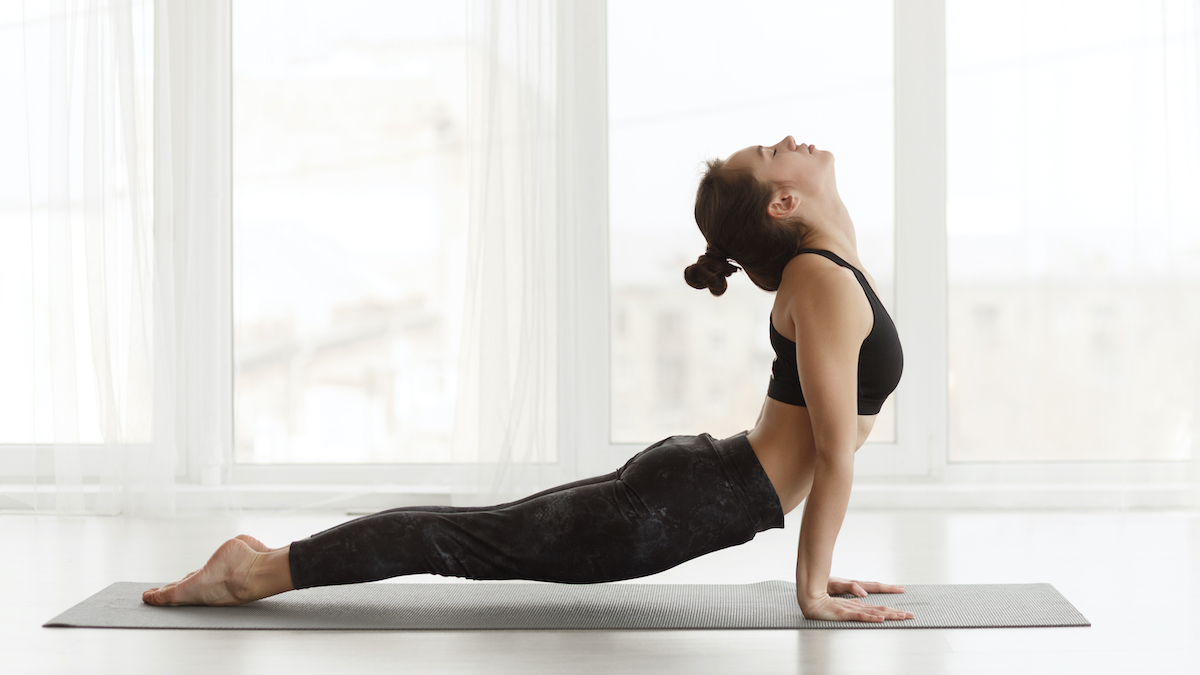Doing This Exercise for 20 Minutes Reduces Inflammation, Says Study

Our bodies have such a complicated—if not dysfunctional—relationship with inflammation. Sure, we love it when inflammation—the natural process by which red blood cells and the immune system react to protect the body—gets to work keeping us healthy and repairing damaged tissue. But we hate it when it becomes too much a good thing, and hangs out in the body far longer than necessary. Referred to as chronic inflammation, it's when your immune system can end up attacking perfectly healthy tissue and cells out of confusion.
In the short-term, inflammation can result in fever, chills, joint pain, and headaches. Over longer periods the outlook is even worse. Chronic inflammation is linked to many conditions, including cancer, arthritis, heart disease, diabetes, and dementia.
Chronic inflammation originates from many sources: autoimmune disorders, genetics, and constant stress—just to name a few. Moreover, lifestyle choices such as sedentary behavior, poor habits (usually involving nicotine), and unhealthy dietary choices can contribute to chronic inflammation, as well.
Sadly, some chronic inflammation is inexorable as we age. "Many mechanisms likely contribute to age-related inflammation. As with all other physiological systems, there are significant declines in immune function with aging that promote inflammation," reads one report published in the scientific journal Aging and Disease.
Thankfully, research published in Brain, Behavior, and Immunity uncovered a refreshingly simple way to help fight chronic inflammation: Go for a 20-minute walk.
Researchers from the University of California, San Diego report that just 20 minutes spent engaging in a moderate exercise like walking is enough to activate the immune system and produce an anti-inflammatory cellular response.
After a single walking session, participants' blood samples showed lower levels of TNF (a protein involved in inflammation) in comparison to samples collected prior to walking.
"Our study found one session of about 20 minutes of moderate treadmill exercise resulted in a 5% decrease in the number of stimulated immune cells producing TNF," explained senior study author Suzi Hong, Ph.D., from the Department of Psychiatry and the Department of Family Medicine and Public Health at UC San Diego School of Medicine. "Knowing what sets regulatory mechanisms of inflammatory proteins in motion may contribute to developing new therapies for the overwhelming number of individuals with chronic inflammatory conditions, including nearly 25 million Americans who suffer from autoimmune diseases."
Even better, study authors stress that you don't even need to really exert yourself to enjoy these anti-inflammatory cellular benefits. "Our study shows a workout session doesn't actually have to be intense to have anti-inflammatory effects," notes Dr. Hong. "Twenty minutes to half-an-hour of moderate exercise, including fast walking, appears to be sufficient."
For even more exercises associated with reducing inflammation, read on, because we've compiled them all right here. And for more reasons you should walk more, don't miss The Secrets for Walking Your Way to a Lean Body After 40, Say Experts.
Cycling

Have you grown tired of putting one foot in front of the other? Try dusting off your old bicycle. Cycling has been shown to be quite effective at fighting inflammation, as evidenced by this research published in the scientific journal Medicine. After three months spent cycling for 20 minutes three times per week, participants showed significant improvements in their inflammatory protein levels. And for more on the benefits of cycling, read about how it can add years to your life.
Yoga

Yoga is a well-known stress buster. Well, stress and inflammation go hand in hand. Taking up a yoga regimen can do a world of good for your mental health, flexibility, and overall physical health, but it can also help lower inflammation levels. This study, published in Oxidative Medicine and Cellular Longevity reports three months of yoga five times weekly resulted in both lower inflammation levels and decreased cortisol. And for more fitness news you can use, read about the surprising Side Effect of Lifting Weights Just 2 Days Per Week.
Dancing

If you don't mind busting a move, it can be a fun way to fight inflammation and beat stress. Research published in Mediators of Inflammation concludes that a moderate-intensity dancing program helped lower TNF levels, with study authors stating that "dance training is a nonpharmacological strategy to reduce inflammation."
Swimming

Swimming is a great way to get in some aerobic exercise and relieve stress, just like walking or cycling, without placing any extra pressure on joints and bones. This is especially helpful from an inflammation standpoint, because painful arthritis of the joints is synonymous with inflammation. And for more ways to be healthier every single day, see here to learn What Walking for Just 20 Minutes Does to Your Body, According to Science.








